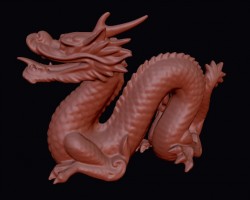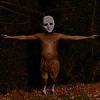I tried to google this topic, and nothing comes out. I would like to know wheather some of you know about this topic anything, and could explain the principels of this shading technique. This technique primises to create shadows on a geometry without a light being present. I cannot imagine how though.
lit sphere shader
Yeah, like about only 60000 hits.
Looks like using the view normal to lookup into a spherical texture.
Yeah, like about only 60000 hits.
Looks like using the view normal to lookup into a spherical texture.
Yeah, I'm pretty sure it's ultimately identical to any other kind of environment mapping (cube mapping, sphere mapping, etc.) in that it's ultimately just a function that maps angle to color. The only advantage I see is that it represents the function in a fairly intuitive way (and it's easy to capture from paintings, photographs, etc. of a spherical object) and that it stores the most resolution for angles that point toward the camera. The disadvantage is that it's actually only half of an environment map.
is it not just a single view space normal dot product over a view space constant vector? Where is cube map involved?
You may also try searching the term "MatCap" or "Material Capture" as this is very similar (if not the same) as that. Render your lights and material to a sphere, then use that resulting image as your lighting environment. Essentially you are precomputing light+material interaction for lights fixed to the viewpoint.
http://cgcookie.com/unity/2013/02/18/introduction-to-matcaps-in-unity/
this seems extremly limiting though. I thought lit sphere is some sort of universal lightless geometry shading without texture resources involved.
Anyway. Using the view space normal on a sphere (here visualized)

yields the hemisphere map itself.

Using a better model

Hmmm, nice:

The shader is quite simple. Ignore z of the view space normal and bring it into texture space.
float2 tex = float2(normal.x, -normal.y) * 0.5 + 0.5;
return LookupTexture.Sample(Sampler, tex);





